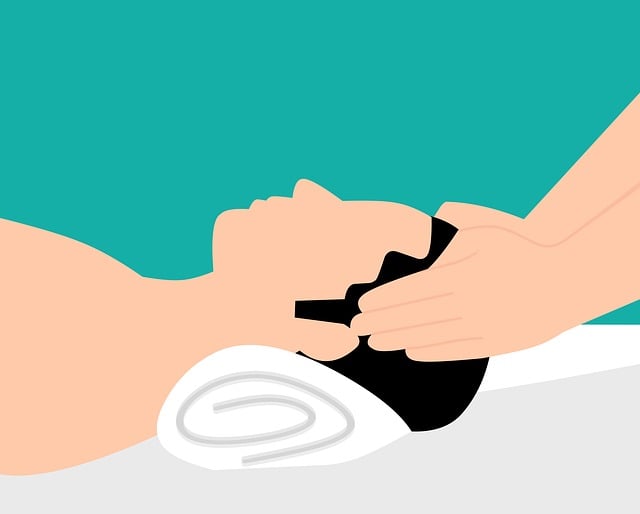Longevity therapy leverages cellular renewal, a natural process replacing old cells with new ones, to promote anti-aging, enhance healing, and improve overall health. This revolutionary approach targets skin, gut, blood, and underlying mechanisms, addressing age-related conditions through stem cell activation, growth factors, and senolytic drugs that remove senescent cells. Regenerative medicine, including cell-based therapies like MSCs, tissue engineering with scaffolds, and gene therapy, holds immense potential to extend lifespan and combat aging. However, safety considerations necessitate regulatory oversight, evidence-based practices, and individualized healthcare consultations. Future prospects include personalized medicine and interdisciplinary research collaborations.
Uncover the power of regenerative therapy as a pioneering longevity therapy, revolutionizing the way we approach aging. This transformative treatment aims to promote cellular renewal, the body’s natural process of replacing old or damaged cells with new ones. By understanding its vital role in longevity, we explore the promise it holds for anti-aging. From key mechanisms to various treatments and their potential impact, this comprehensive guide reveals how regenerative therapy could be the game-changer we’ve been waiting for, offering a glimpse into a future where age is just a number.
- Understanding Cellular Renewal and Its Role in Longevity
- The Promise of Regenerative Therapy for Anti-Aging
- Key Mechanisms Behind Effective Regenerative Therapies
- Different Types of Regenerative Treatments Available Today
- Potential Benefits, Safety Precautions, and Future Directions
Understanding Cellular Renewal and Its Role in Longevity

Cellular renewal is a fundamental process where old cells are replaced with new ones, ensuring the continuous health and functionality of our bodies. It plays a pivotal role in longevity, as it helps maintain the skin’s elasticity, repair damaged tissues, and support overall organ function. This natural mechanism is particularly active in regenerating cells in areas like the skin, gut, and blood.
Longevity therapy leverages this knowledge by focusing on stimulating cellular renewal to promote anti-aging benefits. These therapies aim to enhance the body’s natural healing abilities, encouraging a more efficient replacement of old or damaged cells. By understanding and harnessing cellular renewal, longevity therapy seeks to slow down the aging process, improve overall health, and potentially extend lifespan.
The Promise of Regenerative Therapy for Anti-Aging

The promise of regenerative therapy lies in its potential to promote cellular renewal, offering a promising path towards anti-aging and longevity. This cutting-edge approach aims to reverse some of the natural aging processes that occur in our bodies over time. By stimulating the body’s inherent ability to regenerate and repair itself, these therapies have the potential to reduce the visible signs of aging while also addressing deeper cellular issues.
Regenerative therapy provides a game-changer solution, targeting not just the skin’s surface but delving into the underlying mechanisms that contribute to aging. It offers a more comprehensive approach to beauty and longevity, going beyond temporary fixes to encourage sustained youthful appearance and overall well-being. With its focus on cellular rejuvenation, this therapy has the potential to unlock a new era of anti-aging strategies.
Key Mechanisms Behind Effective Regenerative Therapies

Regenerative therapies promote cellular renewal, a process rooted in several key mechanisms. Firstly, these treatments stimulate stem cell activation and differentiation, enabling the production of new, healthy cells to replace damaged or dying ones. This is particularly evident in longevity therapy, where strategies like senolytic drugs target and eliminate senescent cells, which can impair tissue function and contribute to aging.
Secondly, regenerative therapies often involve the delivery of growth factors and cytokines, signaling molecules that regulate cell proliferation, differentiation, and survival. By enhancing these natural signals, these therapies create an environment conducive to cellular repair and regeneration, offering a promising approach for various age-related conditions.
Different Types of Regenerative Treatments Available Today

The world of regenerative medicine offers a promising landscape for promoting cellular renewal and enhancing overall well-being, often with the added bonus of extending longevity. Among the various regenerative therapy options available today are cell-based therapies, which involve the use of stem cells or specialized cells to repair or replace damaged tissues. These include bone marrow transplants and mesenchymal stem cell (MSC) treatments, known for their multi-potent capabilities in regenerating diverse cell types.
Another prominent category is tissue engineering, where scaffolds and biomaterials are utilized to create artificial structures that support the growth and differentiation of cells. This approach has seen success in regenerating tissues like skin, cartilage, and even complex organs. Moreover, advancements in gene therapy allow for the delivery of genetic material to modify or repair cellular functions, offering potential solutions for age-related declines. These diverse regenerative treatments hold promise for various applications, contributing to improved health and potentially extending the lifespan through enhanced cellular renewal.
Potential Benefits, Safety Precautions, and Future Directions

Potential Benefits
Regenerative therapy, including various longevity therapies, holds immense promise for promoting cellular renewal and restoring physiological functions. By stimulating the body’s inherent regenerative capabilities, these treatments aim to slow down aging processes, improve overall health, and enhance quality of life. Potential benefits span from enhanced skin elasticity and tissue repair to improved organ function and reduced risk of age-related diseases, ultimately contributing to a longer, healthier lifespan.
Safety Precautions
While the prospect of regenerative therapy is exciting, it’s crucial to consider safety precautions. As with any medical intervention, there are risks associated with these treatments. Proper regulatory oversight and adherence to evidence-based practices are essential to ensure patient safety. Rigorous clinical trials and ongoing monitoring are necessary to identify potential side effects, contraindications, and long-term impacts of these therapies. Furthermore, individuals considering regenerative treatments should consult with qualified healthcare providers to assess their suitability based on personal health profiles.
Future Directions
The future of regenerative therapy looks promising, driven by advancements in biotechnology and a deeper understanding of the human body’s regenerative mechanisms. Personalized medicine approaches, tailored to individual needs, are likely to become more prevalent. Additionally, interdisciplinary research collaborations will play a pivotal role in unlocking novel therapeutic strategies. As we continue to explore the potential of longevity therapies, ongoing research will refine our understanding of their long-term effects and contribute to their safe and effective integration into standard medical practices.
Regenerative therapy emerges as a promising frontier in longevity treatment, harnessing the power of cellular renewal to combat the effects of aging. By understanding the key mechanisms behind effective therapies and exploring diverse treatment options, we can unlock new potential for promoting healthy aging and extending our lifespan. As research continues to evolve, prioritizing safety precautions while embracing innovative approaches will shape the future of longevity therapy, offering a vibrant panorama of possibilities for enhancing human vitality.
